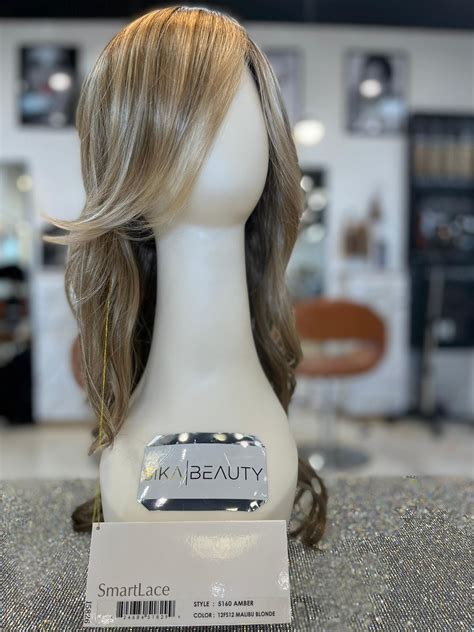Introduction
Cancer treatment can have a profound impact on one’s physical and emotional well-being. Hair loss is a common side effect of chemotherapy and radiation therapy, which can lead to feelings of self-consciousness and distress. Wigs offer a solution to this distressing problem, providing cancer patients with a way to maintain their sense of normalcy and self-esteem.

Statistics on Wigs for Cancer Patients
- According to the American Cancer Society, over 60% of people undergoing chemotherapy will experience hair loss.
- The National Cancer Institute estimates that wigs are the most commonly used head covering among cancer patients.
- Approximately 80% of cancer patients who lose their hair choose to wear a wig.
Benefits of Wigs for Cancer Patients
- Improved Self-Esteem: Wigs can help cancer patients regain a sense of control over their appearance and boost their self-confidence.
- Reduced Anxiety and Stress: Hair loss can be a significant source of stress and anxiety. Wigs can provide a sense of normalcy and reduce the emotional impact of hair loss.
- Enhanced Social Confidence: Wigs allow cancer patients to participate in social activities without feeling self-conscious about their hair loss.
- Protection from the Elements: Wigs can shield the scalp from sunburn, cold temperatures, and other environmental factors.
- Improved Quality of Life: Wigs have been shown to significantly improve the quality of life for cancer patients by reducing the psychological distress associated with hair loss.
Types of Wigs for Cancer Patients
1. Synthetic Wigs:
- Made from man-made fibers
- Affordable and easy to style
- May not be as breathable as natural hair wigs
2. Human Hair Wigs:
- Made from real human hair
- Provide a more natural look and feel
- More expensive and require more care
3. Monofilament Wigs:
- Create the illusion of scalp
- Provide a natural part and undetectable hairline
- More expensive than other wig types
4. Lace Front Wigs:
- Hand-tied lace creates a realistic-looking hairline
- Blend seamlessly into the skin
- Require special care and maintenance
Choosing the Right Wig
Selecting a wig that matches the patient’s needs and preferences is crucial. Factors to consider include:
- Hair Type: Match the wig’s texture and color to the patient’s natural hair.
- Style: Choose a wig style that complements the patient’s face shape and features.
- Comfort: Ensure the wig fits comfortably and does not cause any irritation.
- Budget: Determine a price range that works within the patient’s financial means.
How to Wear a Wig
Step 1: Prepare the Scalp
- Wash and dry the scalp
- Apply a wig cap or liner to protect the scalp and prevent slippage
Step 2: Position the Wig
- Hold the wig at the hairline and place it over the head
- Adjust the wig until it sits comfortably
Step 3: Secure the Wig
- Adjust the wig straps or clips to ensure a snug fit
- Use bobby pins or wig tape for extra security
Caring for a Wig
Proper care and maintenance are essential to extend the life of a wig. Follow these tips:
- Wash Regularly: Wash synthetic wigs every 6-8 wears and human hair wigs every 10-12 wears
- Use Gentle Products: Use wig-specific shampoos and conditioners
- Handle with Care: Be gentle when brushing and styling wigs to prevent damage
- Store Properly: Keep wigs in a cool, dry place when not in use
Financial Assistance for Wigs
The cost of a wig can range from hundreds to thousands of dollars. For patients who cannot afford the expense, there are several organizations that offer financial assistance:
- American Cancer Society: Provides grants for wig purchases
- National Foundation for Cancer Research: Hosts Wig Bank programs
- Look Good Feel Better: Distributes free wigs and head coverings to cancer patients
Conclusion
Wigs offer a valuable solution for cancer patients experiencing hair loss. By empowering patients with a sense of choice and control, wigs can alleviate the emotional burden of hair loss and enhance their overall well-being. With proper care and the availability of financial assistance, every cancer patient can access this transformative resource.
Tables
Table 1: Benefits of Wigs for Cancer Patients
| Benefit | Description |
|---|---|
| Improved Self-Esteem | Wigs can boost self-confidence and reduce feelings of self-consciousness |
| Reduced Anxiety | Wigs can alleviate stress and anxiety associated with hair loss |
| Enhanced Social Confidence | Wigs allow patients to participate in social activities without feeling self-conscious |
| Protection from the Elements | Wigs shield the scalp from sun, cold, and other environmental factors |
| Improved Quality of Life | Wigs have been shown to significantly enhance the quality of life for cancer patients |
Table 2: Types of Wigs for Cancer Patients
| Wig Type | Material | Features |
|---|---|---|
| Synthetic Wig | Man-made fibers | Affordable, easy to style, may not be as breathable |
| Human Hair Wig | Real human hair | Natural look and feel, more expensive, requires more care |
| Monofilament Wig | Thin, transparent mesh | Creates the illusion of scalp, provides a natural part and undetectable hairline |
| Lace Front Wig | Hand-tied lace | Realistic hairline, blends seamlessly into the skin, requires special care and maintenance |
Table 3: How to Choose the Right Wig
| Factor to Consider | Description |
|---|---|
| Hair Type | Match the wig’s texture and color to the patient’s natural hair |
| Style | Choose a wig style that complements the patient’s face shape and features |
| Comfort | Ensure the wig fits comfortably and does not cause any irritation |
| Budget | Determine a price range that works within the patient’s financial means |
Table 4: Caring for a Wig
| Care Tip | Description |
|---|---|
| Wash Regularly | Synthetic wigs: every 6-8 wears, Human hair wigs: every 10-12 wears |
| Use Gentle Products | Wig-specific shampoos and conditioners are recommended |
| Handle with Care | Be gentle when brushing and styling wigs to prevent damage |
| Store Properly | Keep wigs in a cool, dry place when not in use |
